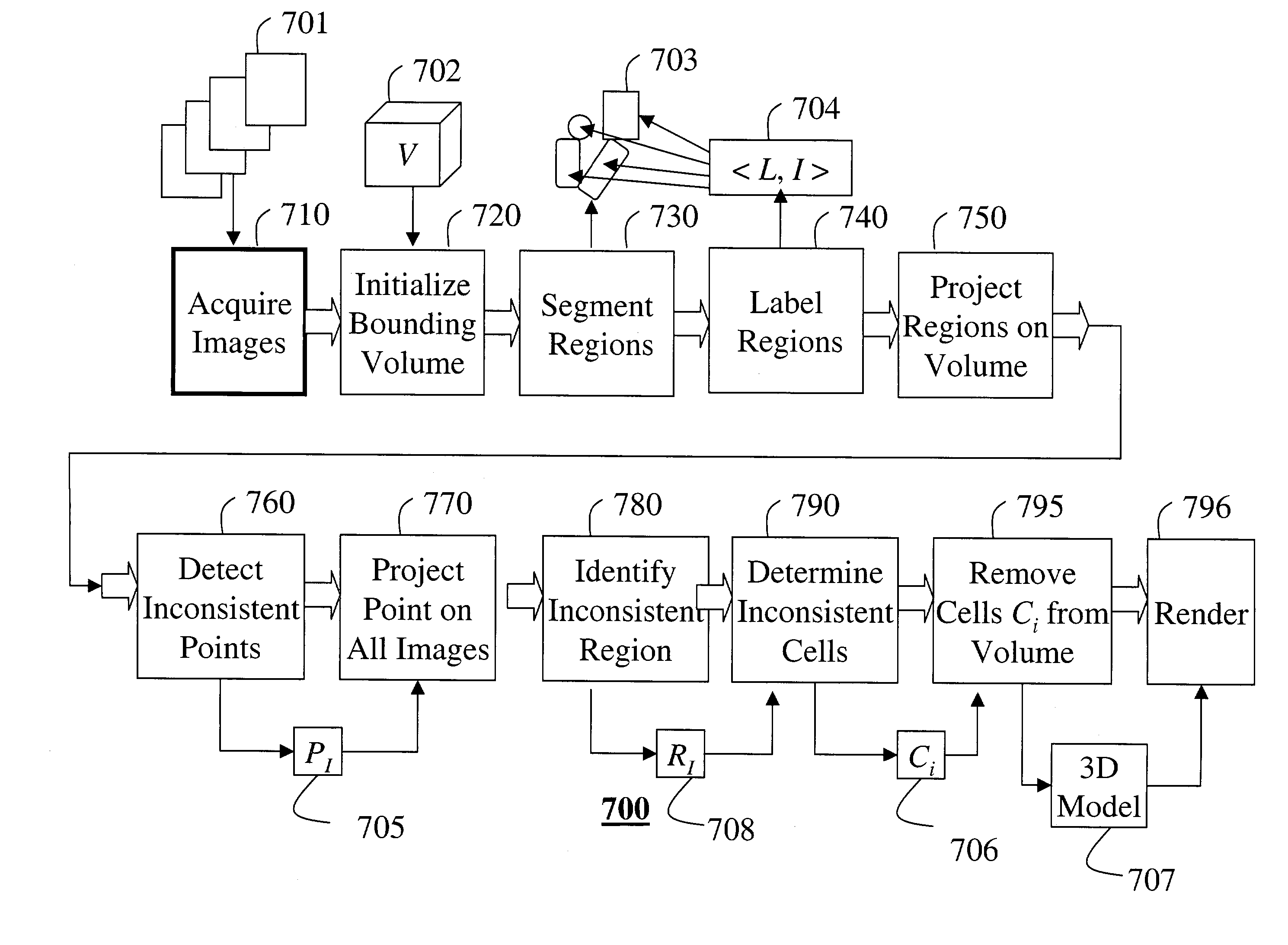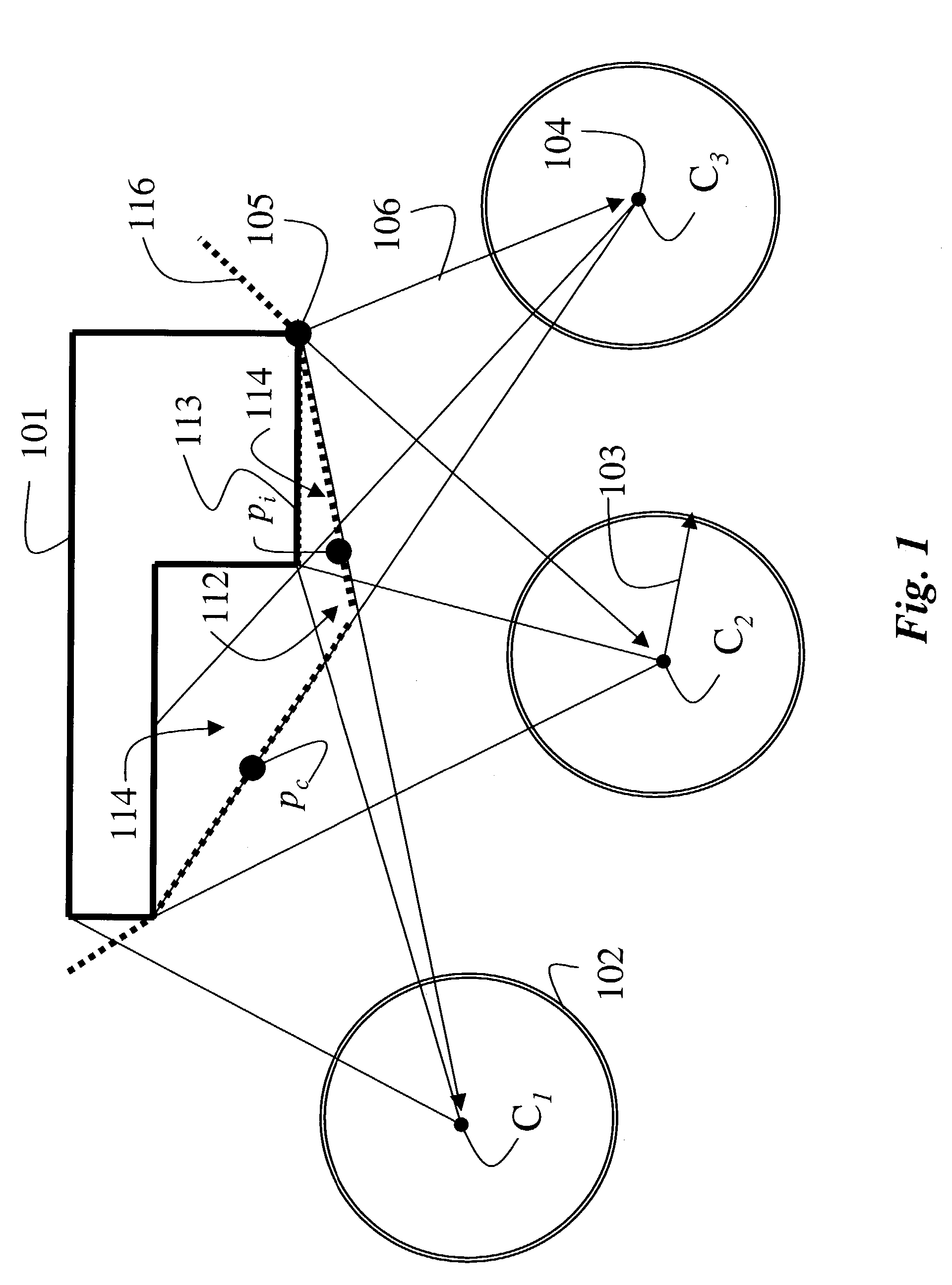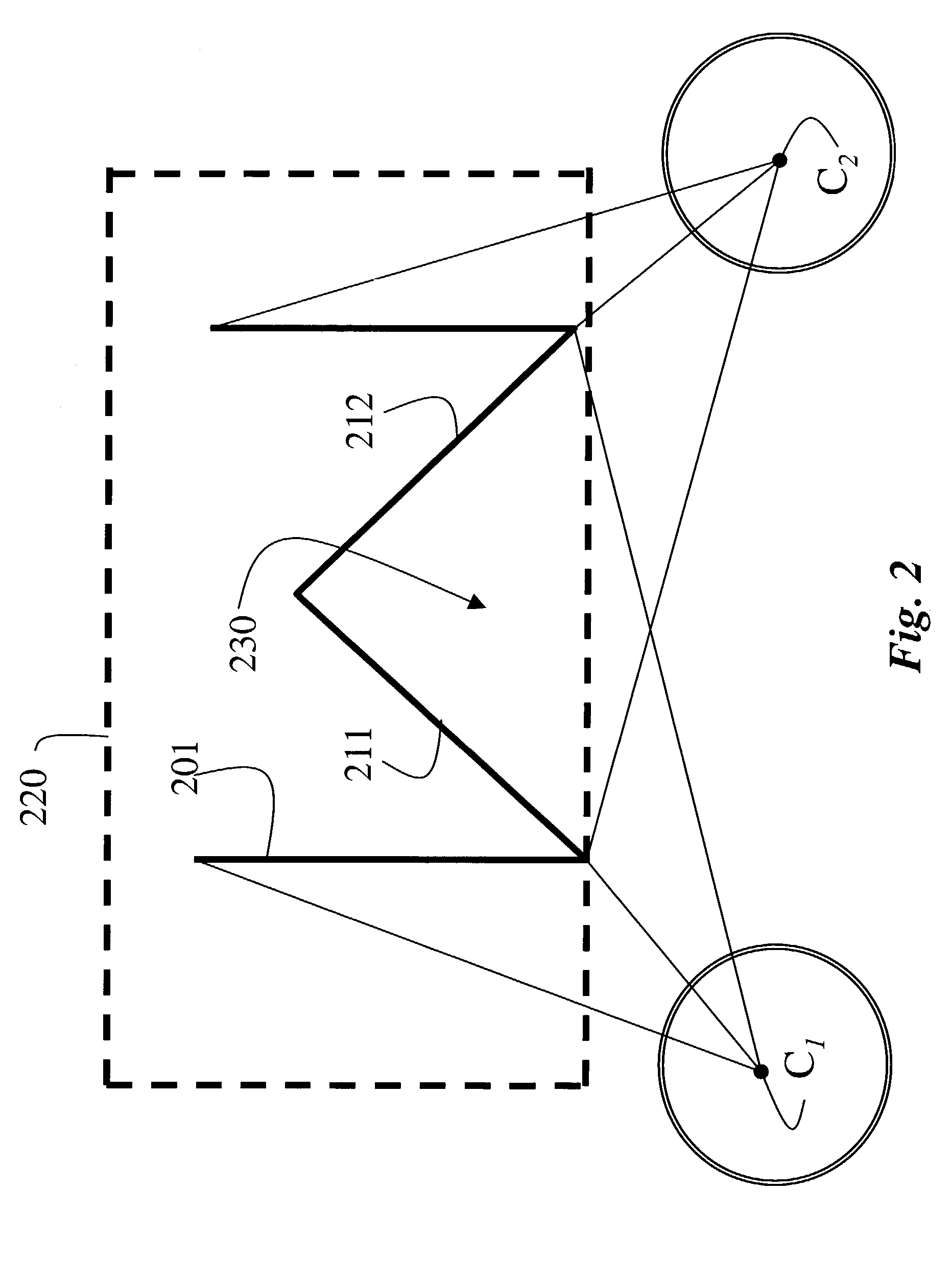Three-dimensional scene reconstruction from labeled two-dimensional images
a two-dimensional scene and three-dimensional scene technology, applied in the field of image-based modeling, can solve the problems of inflexible tools used to construct models, difficult to specify 3d models, and often incorrect assumptions
- Summary
- Abstract
- Description
- Claims
- Application Information
AI Technical Summary
Benefits of technology
Problems solved by technology
Method used
Image
Examples
Embodiment Construction
[0036]FIG. 7 shows a method 700 for constructing a three-dimensional (3D) model 707 of a scene from a set of calibrated two-dimensional (2D) images 701 taken from arbitrary viewpoints.
[0037]First, the images 701 are acquired 710 of a scene. A bounding volume V 702 is initialized 720. This can be done manually or automatically. The bounding volume encloses the entire scene.
[0038]The images are segmented 730 into regions 703. For example, images of a person can be segmented into a head, a torso, and limbs, or a still live scene can be segmented into table, cups, plates, and flower vase. Conventional user-operated or automatic segmentation tools can identify the regions. In the preferred embodiment, the segmentation is along depth discontinuities in the scene.
[0039]The regions 730 are labeled 740 with unique labels 704 or identifications (ID). The labeled regions are projected 750 onto the volume 702 to detect 760 inconsistent points Pi 705. The inconsistent points Pi are then projecte...
PUM
 Login to View More
Login to View More Abstract
Description
Claims
Application Information
 Login to View More
Login to View More - R&D
- Intellectual Property
- Life Sciences
- Materials
- Tech Scout
- Unparalleled Data Quality
- Higher Quality Content
- 60% Fewer Hallucinations
Browse by: Latest US Patents, China's latest patents, Technical Efficacy Thesaurus, Application Domain, Technology Topic, Popular Technical Reports.
© 2025 PatSnap. All rights reserved.Legal|Privacy policy|Modern Slavery Act Transparency Statement|Sitemap|About US| Contact US: help@patsnap.com



